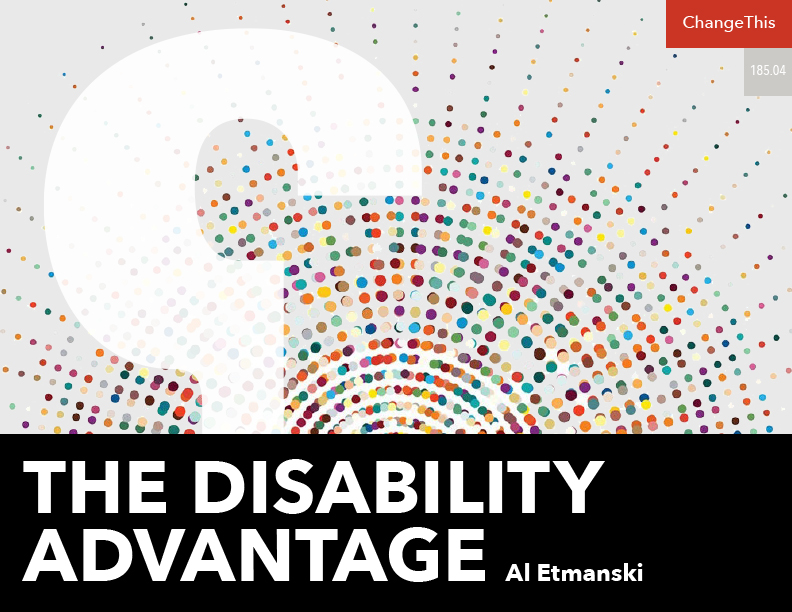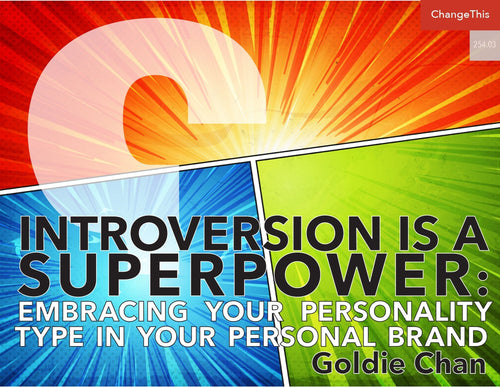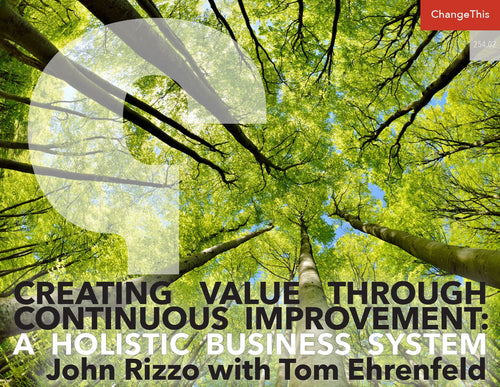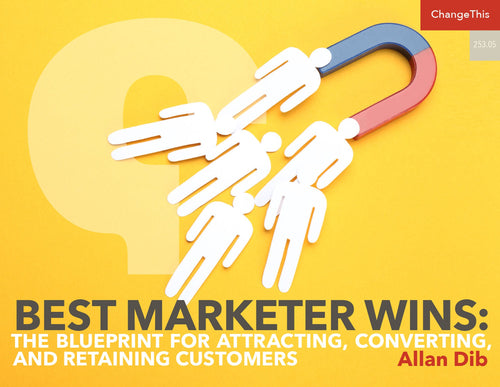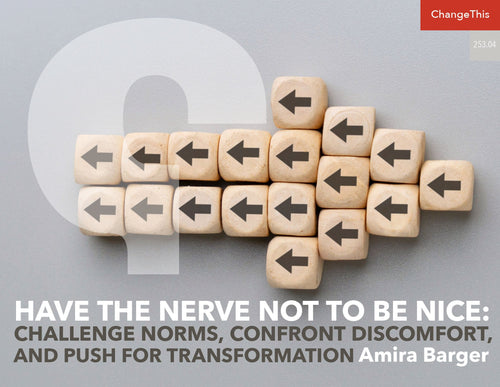The Disability Advantage
There is a pretty good chance you are directly or indirectly connected to the power of disability.
The majority of people are. For starters, one-seventh of the people on the planet have a disability, which makes people with disabilities the largest minority group in the world. When you factor in their family, friends, and allies, which I conservatively estimate as another three in seven, the disability community comprises four-sevenths of the world’s population.
Of all the conditions that bind us together, the experience of disability is the most universal and therefore the most unifying. It’s not just the fact that it touches the majority of people on the planet. It’s that it offers us an alternative to the lone-actor, epic-hero story that abounds. It gives us a story that celebrates our deep connections to each other and to the earth—a story that reminds us that none of us get where we are going on our own and that success doesn’t come from rising above but by rising with.
There is no such thing as the disability world and the “rest of us” world. And we can’t afford for there to be one. There is only one world. If we are going to preserve it, we have to make it a place where people are enlarged, not threatened, by difference. Whereas many people as possible are moving in the same direction. Where we transcend our partisan and ideological beliefs and recognize, indeed rely on, what we have in common: our dependence on each other.
What you might not know is the full extent of the collective achievement of people with disabilities. That’s because the history books have largely ignored them, aside from notable exceptions like Beethoven, Helen Keller, Stephen Hawking, and Temple Grandin. Or credit has been given to someone else.
The time has come to recognize people with disabilities for who they really are: authoritative sources on creativity, resilience, love, resistance, dealing with adversity, and living a good life.
People with disabilities have been instrumental in the growth of freedom and the birth of democracy. They have produced heavenly music and exquisite works of art. They have delighted children and the young at heart with some of the most popular stories ever written. They have made us laugh, touched our souls, and taught us how to love. They have unveiled the secrets of the universe. And they have been on the front lines fighting for justice. They are still doing all those things and more.
The good news is that the golden age of the disability movement is approaching. And it couldn’t come soon enough, because the advantages that people with a disability offer, and there are many, are the perfect remedy for the troubled times we live in. The movement includes people whose disability is related to their mobility, mental health, sight, hearing, flexibility, memory, or intellectual development. It also includes their partners, lovers, friends, and family members, particularly their parents. Although it is not always the case, most adults with disabilities appreciated their parents’ advocacy on their behalf when they were younger. Later in life, as Liz taught me, not so much. Finally, the disability movement includes professional allies such as teachers, therapists, doctors, and service providers as well as champions from government and business.
The disability community exemplifies five powerful disability advantages.
THE POWER OF MAJORITY
One in seven individuals worldwide has a disability. At 1.2 billion, that makes them the largest minority group on the planet. That’s the population of China and almost four times the population of North America. Another three in seven are their families, friends, and supporters. In total, four in seven people in the world have a connection to disability. That’s a potent majority. Those kinds of numbers translate into an audience, a base, and a market that’s too large to ignore and just waiting to be mobilized, especially since it represents $8 trillion in annual disposable income. By comparison, the much-soughtafter teen market is relatively small at $220 billion.
THE POWER OF INCLUSIVITY
The disability movement intersects with every gender, race, ethnicity, color, creed, class, sexual orientation, income level, health condition, living arrangement, and age group. This predisposes people in the disability world to understand difference as a natural fact of life to be welcomed and celebrated, not curtailed or cured. This sensitivity enlarges and enlightens. It encourages us to focus on a person’s contributions rather than his or her condition, limitation, or identity.
THE POWER OF INGENUITY
There is no group in history with more consistent experience at making their mark, despite the deck being stacked against them, than people with disabilities. People with disabilities wake up every day to a world not designed for them. They are constantly inventing themselves out of adverse circumstances. They are the original hackers. Many of the innovations we take for granted were solutions to challenges they faced that went on to benefit the wider population. The bicycle, the typewriter, and curb cuts are three examples.
THE POWER OF AUTHENTICITY
Our culture is inexhaustible in its capacity to ignore our reliance on others. It promotes the myth of individualism, independence, invincibility. Problems are sanitized, simplified, and easily resolved if we just have the right attitude or if we find the right savior. More and more of us are rejecting that view of the world. We want hope that is qualified by authenticity, and we are looking for stories that we can relate to. The fact is that more and more people are struggling to get by or are worried about the future, and we expect to see that reality reflected in our leadership, media, stories, and social movements. The disability movement offers a refreshing alternative to the lone hero, usually a man, overcoming overwhelming odds. It reminds us that justice emerges from the bottom up, not the top down, and always in the company of so-called ordinary people who disrupt the status quo in big and small ways.
THE POWER OF UNITY
The ultimate power of disability is as a unifying force. We live in tumultuous times, with the world increasingly fractured and polarized. People want to know they are not alone, that they can be part of something bigger than themselves. The disability community has the power to bridge our divides and bring us together. After all, disability is the world’s most common condition. It encompasses diversity, exudes ingenuity and authenticity, and is in the majority! That’s an unrivaled combination and force for change.
This is all something I myself was unaware of until my daughter, Liz, was born with Down Syndrome.
After Liz was born, I became a full-time disability advocate. I used my community-organizing skills to help close institutions and segregated schools for people with developmental disabilities. We blocked roads and took government to court. We also used the courts to establish the right of people with severe disabilities to receive medical treatment. I learned that broad-based coalitions that attracted public support were necessary to get politicians to make bold political decisions. Some of my other involvements include establishing one of the world’s first Family Support Institutes for parents of children with disabilities and securing the funds for a five-year national dialogue on redefining citizenship from the perspective of people with disabilities.
In 1989, my wife, Vickie Cammack, and I cofounded Planned Lifetime Advocacy Network (PLAN) to help families answer the question: What happens to their sons and daughters with a disability when the parents die? PLAN does this by creating networks of friends and by developing wills, trusts, and estate plans that protect the wealth of people with disabilities from government encroachment. The PLAN model has spread to more than forty locations around the world. While at PLAN, I proposed and led an antipoverty campaign to create the world’s first savings plan for people with disabilities. The collective individual deposits now total more than $4 billion. They can be used on whatever the person wants and can’t be clawed back by the government.
Along the way, I began collecting stories, articles, and anecdotes about people with disabilities—anything that would help me understand the daughter I was getting to know and the disability movement that had welcomed me. I found gems of insight in the usual places—newspapers, magazines, books, movies, and television. Nowadays I also find them in blogs, podcasts, YouTube videos, TED Talks, concerts, sporting events, art galleries, songs, Instagram, and Twitter. They were everywhere, once I started looking.
I discovered that people with disabilities have been major players throughout history. If you were to take away their contributions, you wouldn’t recognize the world. It would be a much different place and in much rougher shape, even though the history books have missed most of these achievements or have given credit to someone else. I also discovered a debt unpaid. People with disabilities have given the world far more than the world has given them. They have made their contributions throughout history while contending with mistreatment, neglect, and terrible atrocities. They have had to fight for every ounce of support and opportunity in order to survive, let alone thrive and change the world. That’s at the best of times. At the worst of times, people with disabilities have been sterilized, locked up, and killed. Few people realize that the Nazis practiced their mass killing methods on people with disabilities first.
The inescapable fact of life is that we are interdependent. We start life that way. Most of us will end life that way. It’s the tender periods in between that we have trouble accepting or admitting. Ask any worldclass athletes the secret of their success, and they will answer that it’s the support of family and friends. They place it higher than talent and hard work. There is no such thing as excellence or independence without interdependence. Everything that happens in our life can be traced back to a caring relationship. Whether it’s in business, politics, play, school, work, or love, we make our way in the world only because of the caring actions of others. The presence of heartbreak, personal upheaval, chronic illness, infirmity, or disability doesn’t create vulnerability. Our refusal to acknowledge our dependence on the support of others does.
The denial of dependency is a personal, organizational, and societal weakness. We pretend to be who we are not. We develop a false sense of power. We allow our culture to perpetuate the myth of independence, as if it had emerged fully formed without debt or responsibility. And we rob those who are open about their vulnerability of one of their greatest gifts: teaching the rest of us how to live and love with our vulnerabilities.
Adversity, too, can be our teacher if we let it. And why shouldn’t we? Sooner or later, it will find us. And we have to decide what to do with it. Conquer it? Hide from it? Fight it? Leave it to others? Often we have no choice but to accept it. Acceptance isn’t resignation or giving in. It’s an acknowledgment of reality, of what exists. Acceptance gives us a base to begin figuring out what to do next.
Adversity appears in a variety of forms: accident, loss, hardship, cruelty, destruction. Whether it happens to us or to someone or something we love, the suffering and pain is deeply personal, at times unbearable. Grief, anger, fear, and despair are understandable reactions to adversity. So too are the opportunities that people find. This is not to gloss over anyone’s misfortune or to suggest that they are solely responsible for addressing the situation they find themselves in. They are not. A person’s adaptive, problem-solving capacity is enhanced by a caring network and access to resources.
Adversity calls forth our ingenuity. We must do something because no one else is or will. Justice burns brightly. We try anything, borrow anything, cobble together anything at any hour of the day and night until something works or somebody does something. We act with a focus and creativity that we never thought we had. Adversity also cracks us open. We see the world as it is, not as we thought it was or want it to be. We embrace its complexities, contradictions, and ugliness, with a determination and love that we never thought possible.
We can treat adversity as an opportunity. It may not be the opportunity we want, but it’s often the one we are been presented with. We can use suffering and hardship to find common ground with others, often making improvements that benefit many others.
My wish is that we find the natural strength that exists within each of us. That we find meaning in our struggles and losses. That we don’t treat them as personal failings and that we don’t shut ourselves off from others.
The ultimate lesson I’ve learned from my journey in the disability community is that life comes from life. It comes from life in every shape, size, and background. Complex lives. Messy lives. Struggling lives. Determined lives. Funny lives. Mysterious lives. Sensual lives. Beautiful lives. Sacred lives.
It doesn’t come from machines, technology, techniques, and touchups. Nor from artificial intelligence and artificial limbs. Nor from quick fixes and miracle cures. Nor from positive mind-sets and exceptional heroes. These can be useful, but not as much as we have been seduced to believe. And certainly not in isolation.
A thriving life must be accompanied by a nurturing environment that includes family and friends who care about you and a society that cares about you too—cares enough to allocate resources, provide opportunities, and expand justice so that you can live life to the fullest.
Disability is emblematic of the times we live in. Of living with despair. Of struggling to get by. Of making do without recognition and appreciation. Of changing the circumstances of our lives by returning to the basic ingredient of democracy: doing things together.
We are not separate. Although we are different, we don’t have to be alone. We all breathe life, live life, love life, give life, leave life. And we inhabit this fragile, beautiful, and living planet together. The power of disability is the power of that life.

